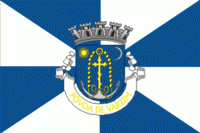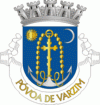Póvoa de Varzim is a Portuguese city in Northern Portugal and sub-region of Greater Porto, 30 km from its city centre. It sits in a sandy coastal plain, a cuspate foreland, halfway between the Minho and Douro rivers. In 2001, there were 63,470 inhabitants, with 42,396 living in the city proper. The city expanded southwards, to Vila do Conde, and there are about 100,000 inhabitants in the urban area alone. It is the seventh-largest urban agglomeration in Portugal and the third largest in Northern Portugal.
Permanent settlement in Póvoa de Varzim dates back to around four to six thousand years ago. Around 900 BC, unrest in the region led to the establishment of Cividade de Terroso, a fortified city, which developed maritime trade routes with the civilizations of classical antiquity. Modern Póvoa de Varzim emerged after the conquest by the Roman Republic of the city by 138 BC; fishing and fish processing units soon developed, which became the foundations of the local economy. By the 11th century, the fishing industry and fertile farmlands were the economic base of a feudal lordship and Varzim was fiercely disputed between the local overlords and the early Portuguese kings, which resulted in the establishment of the present day's municipality in 1308 and being subjugated to monastic power some years later. Póvoa de Varzim's importance reemerged with the Age of Discovery due to its shipbuilders and merchants proficiency and wealth, who traded around the globe in complex trade routes. By the 17th century, the fish processing industry rebounded and, sometime later, Póvoa became the dominant fishing port in northern Portugal.
Póvoa de Varzim has been a well-known beach resort for over three centuries, the most popular in Northern Portugal, which unfolded an influential literary culture and historical-artistic patronage in music and theater. Casino da Póvoa is one of the few and prominent gambling venues in Portugal. Leisure and health benefits provided in large sandy beaches attracts national and international visitors. Póvoa de Varzim holds other landmarks, especially the traditional Junqueira shopping street, Garrett Theatre, the Ethnography and History Museum, Cividade de Terroso, the Medieval Rates Monastery, Baroque Matriz Church, city Hall and Portuguese vernacular architecture in Praça do Almada, and numerous Portuguese cuisine restaurants that make Póvoa de Varzim popular in all Northern Portugal, which started to attract an international following. Farol da Lapa, Farol de Regufe, the main breakwater of the Port of Póvoa de Varzim, Carvalhido and São Félix Hill are preferred for sightseeing. The city has significant textile and food industries. The town has retained a distinct cultural identity and ancient Norse customs such as the writing system of siglas poveiras, the masseira farming technique and festivals.




















